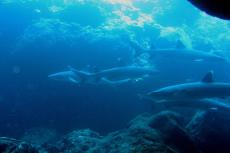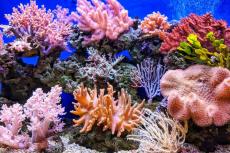Italy - can "smart salad dressing" save Venice from environmental catastrophe?
Futurevenice.org is an organization dedicated to looking at things differently and how rapid advances in science & technology could be harnessed to solve the extraordinary environmental and architectural challenges facing the iconic city of Venice.
The city was built on the lagoon some 600 years ago so that the surrounding waters could be used as a large "moat" that would help protect it, but beneath it's stone foundations is soft clay, peat & watery sand, which is slowly but surely allowing the city to sink downwards.
Rising levels in the Adriatic Sea and changing tidal surge patterns has meant increasingly common incidents of flooding in the historic city over the last 30-40 years, and each flood causes further damage to it's buildings and their foundations. An ambitious and very expensive series of 78 steel floodgates have been proposed to provide a controllable barrier at the lagoon’s edge and preventing the flooding. But significant environmental, engineering & financial challenges face this approach.
This is where the smart salad dressing comes in... Collaborative research between Martin Hanczyc from the Southern University of Denmark with Neil Spiller and Rachel Armstrong from The Bartlett School of Architecture, University College, London, is attempting to utilize “metabolic materials” as a kind of living technology that can be deployed in the built environment.
The research focuses on the use of “protocells” - simple simple chemical agents that are able to move in their environment, sense it, modify it and perform complex behaviors. Protocells can also be programmed, for example they can be made light-sensitive and migrate away from the light in to the darkest areas.
The concept for Venice is to design the metabolism of a light-sensitive protocell that can capture carbon dioxide from a solution and turn it into its solid carbonate, that would be released en-masse in to the city's canals.
The photocell's would automatically move towards the darkened areas under the foundations of the city, where they would interact with traditional building materials and turn the foundations of Venice into a limestone-like reef that would prevent further subsidence.
Such a reef would also distribute the point load of the city on the floor of the lagoon across a hard limestone-like base. Simultaneously it would deposit solid material in any gaps between the buildings and their foundations, which would further stabilise the city base by extending the solid landmass around the city from the lagoon.
Finally, the reef would also reduce the volume of water flowing around the city, thereby buffering it against the effects of water erosion and large movements of subterranean soil.
- Log in to post comments



























